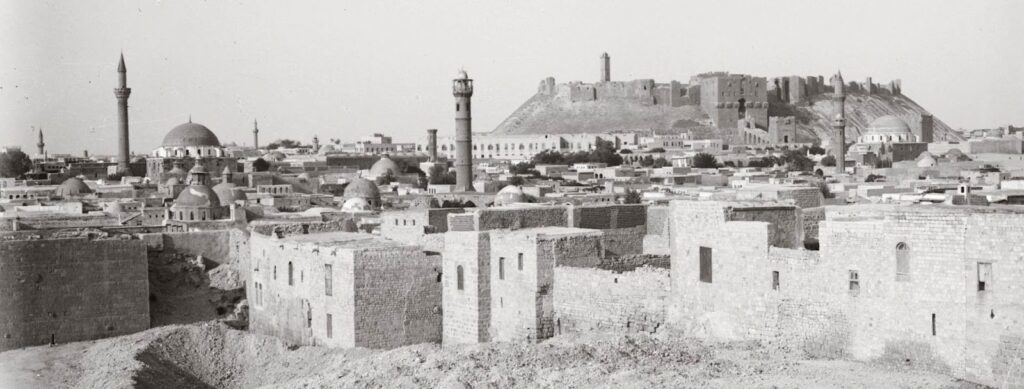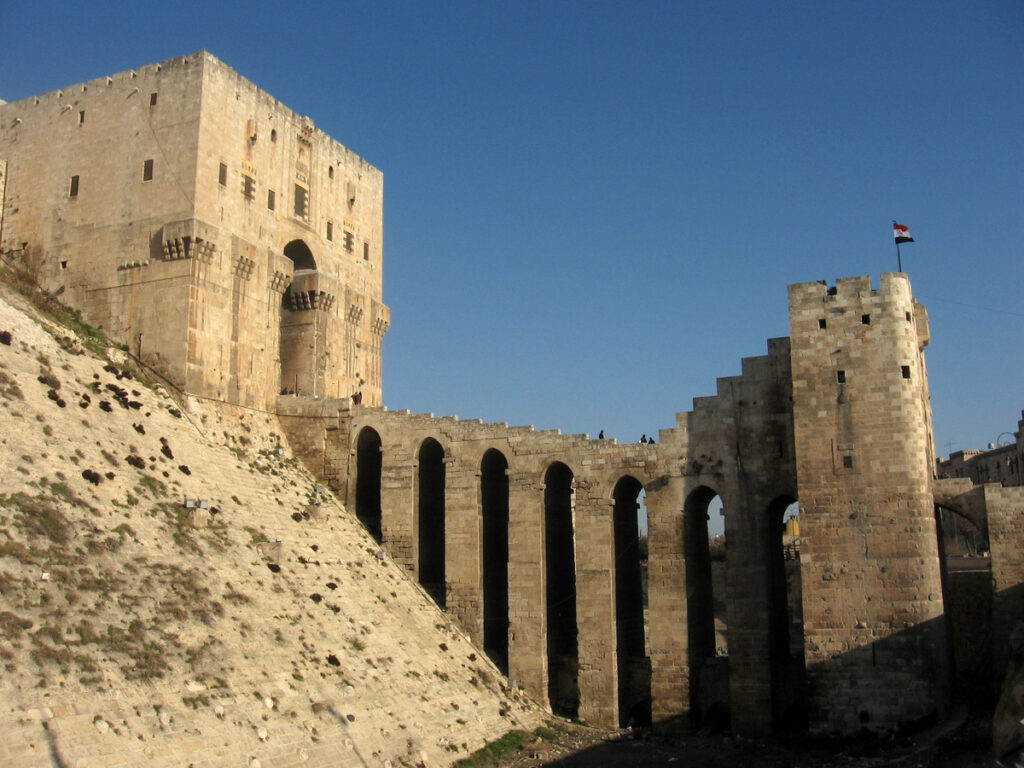A Brief History of the Aleppo Citadel

By: Norah Soufraji/ Arab America Contributing Writer
Towering over Syria’s largest city of Aleppo is a remarkably preserved medieval castle complex known as the Citadel of Aleppo. Considered to be one of the oldest and largest castles in the world, this fortress was constructed by the Ayyubbids and was later occupied by the Armenians, Greeks, Byzantines, and Ottomans over the centuries. The Citadel of Aleppo has been a UNESCO World Heritage site since 1986. This impressive structure is considered one of Syria’s greatest historical and cultural treasures.
Architecture & Construction

The Citadel of Aleppo is a perfect example of a fortress. The structure is strategically placed to tower around the surrounding cityscape and provide a strategic vantage point to deter invaders. The citadel is as old as the city of Aleppo itself which is considered one of the oldest continuously inhabited cities in the world, having been founded in the 2nd millennium BC. The site began as a Neo-Hittite acropolis. The Neo-Hittites were a civilization native to Northwestern Syria and Southeastern Turkey that comprised Luwians who were native to Anatolia and Aramaean Semitic people.
One of the first builders of the Citadel is thought to be Seleucius Necator who was a Greek King and one of the generals of Alexander the Great. One of the first builders of the Citadel is thought to be Seleucius Necator who was a Greek King and one of the generals of Alexander the Great. Throughout the centuries, the Greeks, Romans, and Byzantines added to the overall structure, with various towers being constructed to continue fortifications.
Once the Muslim Arabs conquered the fortress, residences, iron gates, and a mosque were constructed. The Citadel would later be damaged extensively during the Mongol invasions beginning in the 1240s. Before that the Citadel of Aleppo withstood countless other invasions throughout the centuries from the Mitannians, Egyptians, Babylonians, Assyrians, and Persians.
Despite the comings and goings of the empires of history, the great philosopher Aristotle, who was accompanying the army of Alexander the Great, was impressed by Aleppo’s climate and cleanliness and chose to remain there while recuperating from an illness.
Cultural & Trade Center
The Citadel of Aleppo was not only a fortified structure but a city and community within itself. Each empire that resided there left behind various structures of cultural and religious significance. The Ancient Aleppians constructed temples to Hadad the god of lightning and thunderstorms and Shamsh the god of the sun and justice. During the Byzantines, churches were built as well as residences for the local governors.
Aleppo gained more importance during the days of the Crusades. Imad ad-Din Zengi and his son Nur ad-Din unified Aleppo and Damascus and successfully pushed back the crusaders. Famous crusaders such as King Baldwin II of Jersusalem, Josecelin II Count of Edessa, and Raynald of Chatillion were all imprisoned at the Citadel of Aleppo at one point or another.
The golden age of Aleppo is when it was ruled by Saladin and his son al- Zahir al- Ghazi of the Ayyubid Empire. During this period, the walls were fortified, water canals and viaducts were connected, and additional residential palaces and baths were constructed in the complex. After the Mongol conquests and the rule of Timur Ling the Citadel was severely damaged. During the Mamluk period that followed, the palace in the Citadel built by the Ayyubids was abandoned.
In the Ottoman period, the Citadel primarily served as a fortress to house the janissaries. In 1521, Sultan Suleyman ordered for the structures to be restored. Throughout the rest of the Ottoman times, the Citadel continued to primarily serve as a military fortress, although it was restored after it was heavily damaged by an earthquake in 1822.
During the French Mandate which began in 1920, archeological excavations of the site began. It is during this time that the Mamluk era throne room was restored and redecorated in 19th century Damascene style. In 1980, an amphitheater was constructed over an un-excavated surface and would be a site for future events and concerts. The Citadel of Aleppo was classified as a UNESCO World Heritage site in 1986.
Check out Arab America’s Blog









